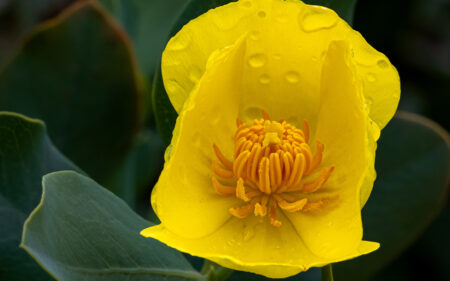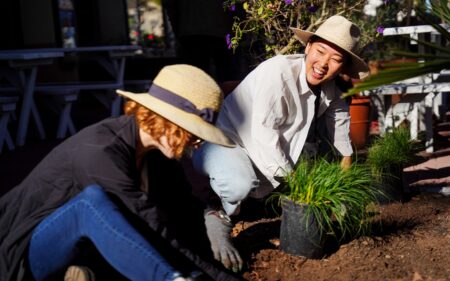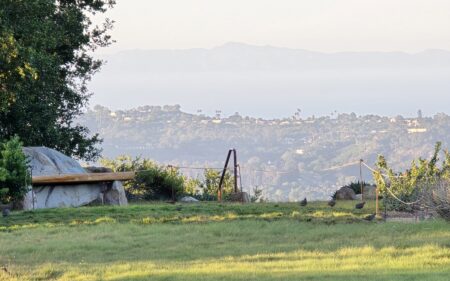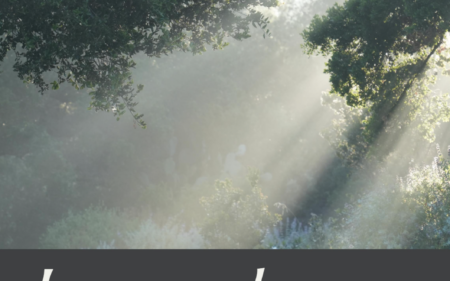Biodiversity Conservation on San Nicolas Island
As the most remote of the California Channel Islands, San Nicolas has the reputation of being a mysterious, wind-swept place. Known popularly as the Island of the Blue Dolphins from the 1960 Scott O’Dell novel, this place served as the setting for the tale, which was inspired by the real-life events of the Lone Woman. She was the last of the original human inhabitants who called San Nicolas home for thousands of years. The original residents were massacred by sea otter hunters in 1811, and the remaining people were removed from the island in 1835. The only exception was the Lone Woman who remained on the island for 18 years. Beginning in 1853, San Nicolas was used by a series of sheep ranchers before final transfer of the land to the U.S. Navy in 1947, when it became part of the Naval Air Station at Point Mugu. There are few records of what the vegetation looked like prior to the ranching period, during which native shrubs were nearly eliminated due to grazing and lichen crusts were severely damaged due to trampling.

In 2019, we partnered with the Naval Base Ventura County, San Nicolas Island natural resources managers to document the biodiversity of the island, especially focused on historically under-collected groups like lichens and fungi. Using what we learned, we are applying genetic tools to increase ecological knowledge of the charismatic endemic foxes and snails. We are doing this in three parts: 1) Documenting biodiversity through surveys and collection of specimens that are placed in natural history museums, 2) Building a DNA reference library using tissues associated with these museum specimens, 3) Diet analysis of the San Nicolas Island fox (Urocyon littoralis dickeryi) and San Nicolas Island snail (Micrarionta feralis).
This project began with assembling a team of biodiversity specialists. The group’s goal was to make a new suite of natural history collections along with tissue samples for concurrent genetics work. The team of taxonomists included the Garden’s Tucker Plant Systematist and Herbarium Curator Dr. C. Matt Guilliams and Conservation Geneticist Dr. Kristen Hasenstab-Lehman for vascular plants, Dr. Benjamin Carter, Assistant Professor at San Jose State University for mosses and liverworts, the Garden’s Tucker Lichenologist Dr. Rikke Reese Naesborg for lichens, Christian Schwarz, Research Associate at University of Santa Cruz for macrofungi, and the Garden’s Conservation Technician Stephanie Calloway and Invertebrate Biodiversity Postdoctoral Scholar Dr. Casey Richart for terrestrial invertebrates. Once assembled, the team headed out for several surveys throughout the year and made many discoveries along the way. Our surveys resulted in:
• 405 new vascular plant specimens, eight of which are new records for the island
• 80 bryophytes, adding eight new species and one new family of liverworts for San Nicolas
• 610 collections of lichens, 48 of which were new island records; one is new to science
• 113 macrofungi collections, representing the first ever collected on San Nicolas; two collections are new species to science
• Over 340 collections of over 100 species of invertebrates, including what appears to be a new millipede to science






During the second phase of this project we are constructing a DNA reference library for San Nicolas Island that consists of barcode markers from the tissues collected during surveys. These are small portions of the genome unique for different types of plants, fungi, and animals. Reference libraries, backed up with the museum specimen and expert determination of that collection, can be used as a carefully curated database to search against when trying to identify species using DNA. In the Santa Barbara Botanic Garden’s genetics lab, we are taking samples provided by collectors, isolating DNA, and sequencing barcode markers. We place both the barcode markers and associated specimen information in online platforms so that it can be used as a resource, both in our studies as well as by researchers from across the globe.


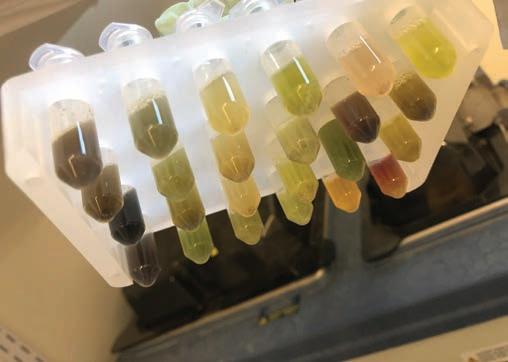
In the third part of this study we are using DNA barcodes to increase the understanding of diet of both San Nicolas Island Foxes and Island snails. Previous studies have used physical assessment of scat to understand and assess food sources of Island foxes. However, these methods usually cannot detect soft-bodied organisms such as terrestrial invertebrates, fungi, lichens, and green plants. All of these groups could be resources in an omnivore diet, but we don’t know which species might be important in supporting a healthy population of foxes on San Nicolas. DNA sequences found in their scat can be compared against the DNA reference library to know which potential food items are important in this intricate food web. This same method can be applied to the extremely rare San Nicolas Island snail, for which physical examination of the scat leaves more questions than answers. This snail is thought to be an herbivore, but whether it is eating green plants, lichens, or fungi is unknown. Additional threats for these snails include carnivorous land snails, introduced to the island in the twentieth century. Assessing whether the endangered snails are a component of the predatory snail’s diet will allow Navy biologists to take conservation action if needed to reduce the chance of extinction of an island endemic.


We are using traditional, boots on the ground biodiversity inventories to increase our understanding of organisms on San Nicolas Island, which has resulted in 1,468 museum collections, 181 organisms documented for the first time on the island, as well as the discovery of four species not known to science.


The Santa Barbara Botanic Garden and its partners on this project are using modern approaches to build a reference library that will serve as the basis for species identification using DNA in samples, such as scat, that are not readily determined in other ways. This knowledge will aid land managers from the Navy in understanding ecosystem level interactions that support survival for all branches of the tree of life on San Nicolas, and will help land managers make science-based natural resource decisions for species from the well-known island fox, to the lesser known but equally interesting San Nicolas Island snail. This blending of traditional and cutting-edge collaborative biodiversity research is what allows the Garden to be a leader in California conservation and research.

 Donate
Donate
